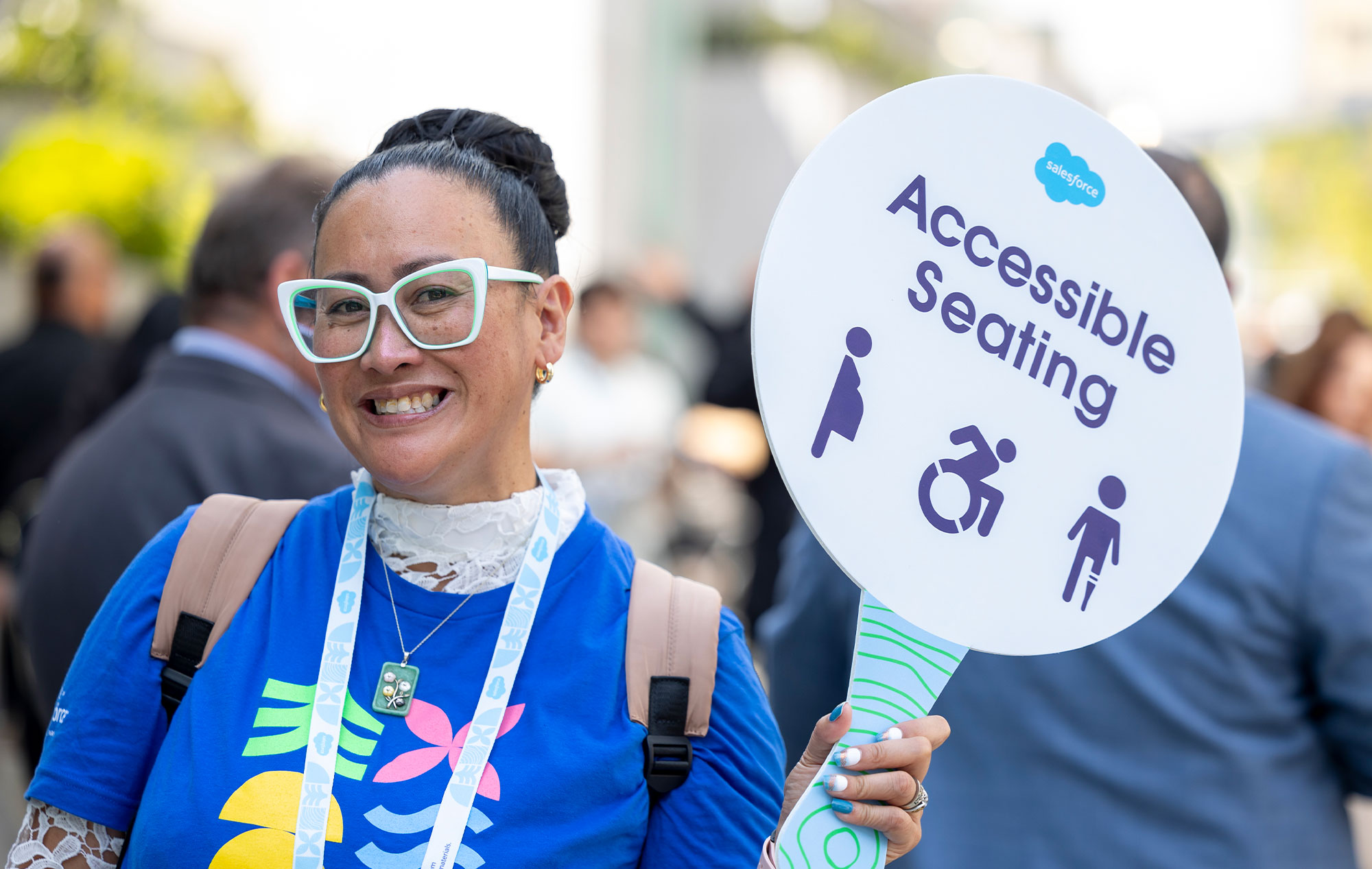Members of our society deserve to participate in the online world to the maximum extent that they can. You should care about web accessibility guidelines, and implement them on your site because, frankly, it’s the right thing to do.
But beyond the obvious ethical reasons, there are solid digital marketing reasons why accessibility should be a top priority. Following accessibility guidelines can have a positive impact on search engine optimization and your organic search channel.
How SEO and Accessibility Work Together
On-page search engine optimization (SEO) best practices and web accessibility guidelines have various points where they overlap.
This is, in part, because of the similarities between search engine crawlers and assistive technologies (AT), such as screen readers. Although these technologies are able to process the content of a page, they need extra technical help to understand the content to ultimately do their jobs effectively.
Here are six SEO concepts that work with accessibility guidelines that you can apply to your digital marketing and SEO strategy today:
- Title Tags
- Headings and Header Tags
- Image Captioning
- Anchor/link text
- Video and Audio transcriptions
- Structured Data
But before we get into these accessibility and SEO topics, we’ll explain what the accessibility guidelines are, who decides them, and how search engines are considering accessibility in 2020.
What is Web Accessibility and Who Makes the Guidelines?
The World Wide Web Consortium (W3C) is an international organization of full-time staff and members of the public that collaborate to develop best practice guidelines for website accessibility. One set of guidelines they have developed are the Web Content Accessibility Guidelines (WCAG).
This exists to make sure that the web is accessible to people with a diverse range of hearing, movement, sight, and cognitive ability. Generally speaking, poorly designed websites are difficult to use for people with disabilities.
Search engines such as Google are making adjustments to their algorithm and technologies to improve the general user experience, accessibility included. So, complying with accessibility guidelines will not only invite a more diverse audience, but it will also help you stay ahead of the curve when it comes to SEO.
The Future of Web Accessibility and SEO
Google recently announced that in 2021 user experience will become a ranking factor. This means that there will be more optimizations that overlap between Web Accessibility and SEO.
Additionally, Google increasingly favors pages that have multiple types of content (video, audio, images, text), and technology will continue improving. As user experience becomes more central, accessibility will only continue to improve, and you want to make sure that your website and digital marketing and SEO strategies are in alignment with web accessibility and SEO best practices, now and in the future.
Six Ways Web Accessibility and SEO Overlap
1. Title Tags
SEO:
Page titles and title tags are a cornerstone of SEO. They provide context for the page's content for a search engine and they serve as the title text that appears in the search results.
Accessibility:
The W3C also endorses title tags to help people with disabilities easily access a webpage and understand it accurately. Here is what their documentation says on title tags:
- This criterion benefits all users in allowing users to quickly and easily identify whether the information contained in the Web page is relevant to their needs.
- People with visual disabilities will benefit from being able to differentiate content when multiple Web pages are open.
- People with cognitive disabilities, limited short-term memory and reading disabilities also benefit from the ability to identify content by its title.
- This criterion also benefits people with severe mobility impairments whose mode of operation relies on audio when navigating between Web pages.
Best Practices:
When using title tags, the best practices for both SEO and accessibility is to make the title as clear as possible, and make sure it accurately represents the content. Think, “If someone read only this title to me, would it give me a good idea of what the article is about?”
Although you’ll want to include your target keyword for SEO, make sure that you only include it once in your page title so that the content reflects the keyword you’ve chosen, but is also a clear representation of the content on the page.
2. Headings and Header Tags
SEO:
H1 headings identify the page title and help with SEO because they give search engines and general users a good idea of what the content on a page is going to be about. H2-H6 tags will signify sub-topics, and help define the content structure.
Accessibility:
Headings are also beneficial for assistive technologies such as screen readers because they help to orient the screen reader on the page, so it can break up the content into sections for the user. Headings power their heading navigation functionality, which helps the user easily move from heading to heading.
Best Practices:
For both SEO and accessibility, you'll want to make sure you have your main topic and subtopic marked with appropriate headings that describe the subsequent content and don’t use more than one H1 heading for both screen readers and search engines.
3. Video and Audio Transcriptions
SEO:
Providing video and audio transcriptions is an SEO best practice, because it makes content crawlable for search bots and enables that page to rank for more keywords and be indexed more effectively.
Accessibility:
Users who are hearing-impaired rely on accurate video and audio transcriptions to access any non-visual content in the video/audio.
Best Practices:
For accessibility and SEO make sure all your video content includes quality captions, which means that you need to edit your captions to make sure they are correct and easy to read. It’s also best to also include a transcription of the video underneath if possible.
When it comes to audio without visuals (like podcasts) it’s best to have a secondary resource that includes a full transcription of the audio. For podcasts, the best thing to do is to create a dedicated landing page for each episode and follow the best accessibility and SEO practices for web pages.
4. Image Captioning
SEO:
Google uses image captions, or image alt text, to determine what is on an image and how it relates to the surrounding text. This improves your chances of ranking the image in image search. Depending on the topic, images can be a ranking factor. Meaning, if you include a certain number of images in an article on your site, it can rank better in Google search. So, you’ll want to include them.
Accessibility:
Marking an image with a caption or image alt text, also makes it so that people with visual impairments have access to information about the image through screen readers.
Best Practices:
For both SEO and accessibility It’s good to include at least one image on a page with alt text or image captioning for both screen readers and search engines. This can be included under the image or in the code.
5. Anchor/Link Text
SEO:
Links with descriptive anchor text help SEO because it provides context for search engines to know what the destination page is about. Backlinks—links from another website—help search engines determine what keyword, phrase, or topic that page should rank for in search results.
Accessibility:
Links with descriptive anchor text are similarly beneficial for screen readers. They provide context, telling screen reader users tabbing through links what the link points to, helping them find the right information.
Best Practices:
For SEO and accessibility, when linking to other pages, it’s important to use relevant anchor text that describes the information a user can expect to find on the linked page. If you are linking to an internal page on your site, you should link the specific keyword or phrase you’re trying to rank the page for—as long as it’s actually what the page is about.
6. Structured Data
SEO:
Structured data, also known as schema markup, helps search engines understand what a page is about. Basically, it is an orderly and authoritative line of code that tells a search engine what’s on a page, whether it be a product, an event, a recipe, etc. Not only does this help them index pages better, but it qualifies pages for rich results and voice search—all good things for SEO.
Accessibility:
The fact that structured data powers voice search is hugely beneficial to people with a variety of disabilities. For those that are visually, physically, or cognitively impaired, voice search can help simplify the search process.
Structured data also helps people using various assistive devices, which use different browsers to better understand information on a page and navigate through content.
Best Practices:
For both SEO and accessibility, you’ll want to implement structured data on anything that there is markup for. JSON-LD is Google’s preferred structured data format. You can utilize the schema.org vocabulary and markup your website in the JSON-LD format yourself, or you can utilize an SEO software platform to automatically implement structured data throughout your website.
In Summary
Of course, there are many web accessibility guidelines that don't intersect with SEO , and you’ll want to read up more on web accessibility to ensure that your site is optimal for people with disabilities, but by optimizing for these six things, you’ll give yourself a good start to having a more accessible and user-friendly website.
Ready to get started today? Here’s a list of resources and tools to help:
- Title Tag Length Checker
- Headings Usage Checker
- How to Caption Images
- Everything you need to know about anchor text
- Video and Audio transcription tool
- What is Structured Data
- W3C Accessibility Standards Overview
- Web Accessibility Tutorials for digital professionals
- Try out using a screen reader for yourself






Leave a Comment